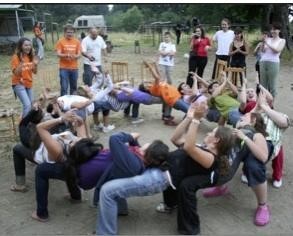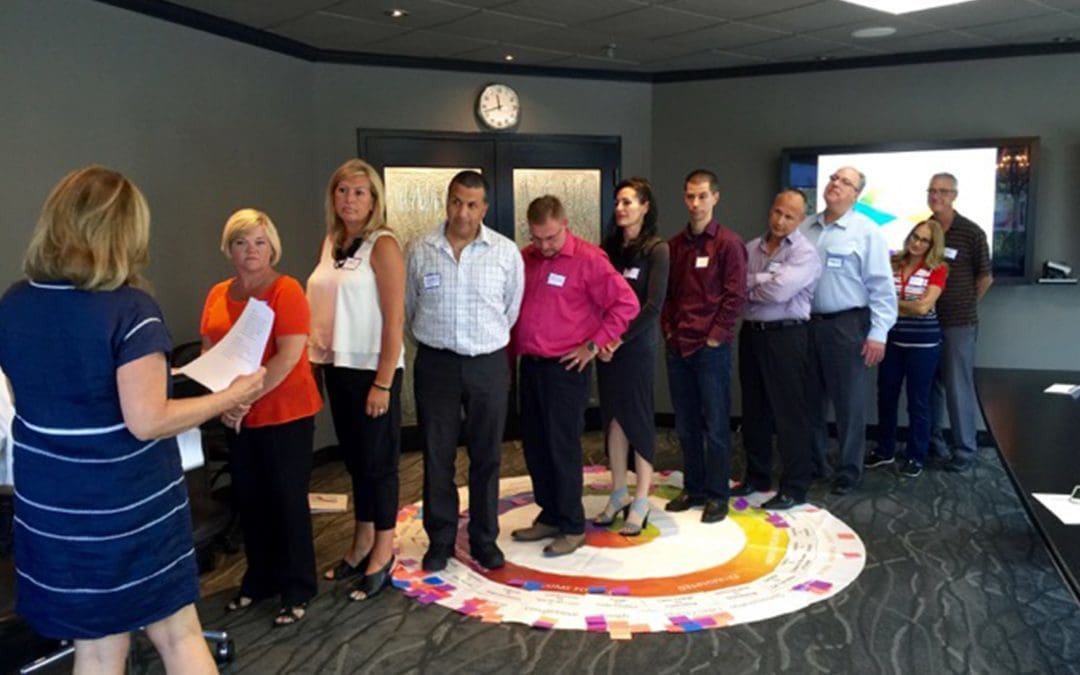Trust – The Foundation
It was an exciting, but very tense time at the company where I was hired to do some team coaching. The executive team and department managers were meeting to discuss the new software implementation project in order to get the input that was needed to ensure that the new system would serve the stakeholders’ needs well. It was the final step prior to going live.
Why is the company’s management team experiencing such a sense of dread?
Traditionally this management team has had difficulty making timely decisions where they are all feeling aligned. At several previous meetings with the agenda to gather input for this project, it was clear to everyone present that the atmosphere was not at all collaborative. In fact, at the meetings leading up to and including this one, it felt as if animosity and ego was polluting the air.
The political games, hidden agendas, unresolved interpersonal conflicts, and interdepartmental rivalries indicate, according to Steven M.R. Covey, author of “The Speed of Trust™” that this team has little confidence in each other. As further evidence of this, in order to sidestep conflict, many do not speak their minds – turning these meetings into, what feels like, a colossal waste of time.
 This organization is suffering from a lack of TRUST.
This organization is suffering from a lack of TRUST.
According to Patrick Lencioni, in his book “The Five Dysfunctions of a Team: A Leadership Fable”,TRUST, in everyday life and in business, is a critical and fundamental ingredient in developing a highly functional team. He states that, “ Teams that lack trust waste inordinate amounts of time and energy managing their behaviours and interactions within the group. They tend to dread team meetings, and are reluctant to take risks in asking for, or offering assistance to others. As a result, morale on distrusting teams is usually quite low, and unwanted turnover is high.”
So what exactly is trust in a Team Context

Simple trust can be defined as the confidence/belief that your colleagues or team members will follow the generally accepted “rules of engagement” that the team has established for themselves. However the ability to “count on” a certain set of behaviours is only a beginning. Teams must also trust each other on an even deeper level.
Lencioni calls this vulnerability-based trust and describes it as a place where leaders (and their teams), “comfortably and quickly acknowledge, without provocation, their mistakes, weaknesses, failures, and needs for help. They also recognize the strengths of others, even when those strengths exceed their own.” It is only when team members make themselves vulnerable to each other and are confident that these vulnerabilities will not be used against them, that they can then become a team that truly “has each other’s back”. This level of trust enables team members to put the team ahead of “self” and gives them the freedom to focus their energy on accomplishing their team’s and organization’s goals.
Can Trust really provide organizations with the competitive advantage?
The phenomenon of trust has been extensively explored by a variety of disciplines across the social sciences, including economics, social psychology, and political science. Over the past 40 years the body of research has found that trust can be associated with a number of favourable outcomes for teams and organizations. Morgan and Hunt (1996) showed that work relationships characterized by trust engendered co-operation, reduced conflicts, increased commitment to the organization and lowered attrition. The general consensus is that trust is essentially important for successful cooperation and effectiveness in organizations
Why is trust so difficult to develop and maintain?
- It Takes Two to Tango.
Trust building is an interactive process that involves (at least) two individuals learning about each other’s trustworthiness;
- Trust is built up gradually and incrementally.
It is reinforced by previous trusting behaviour and previous positive experiences. Sadly it is as delicate as crystal and can be destroyed in an instant by a single mishap or mistake.
- There is no absolute certainty that the trust will be honoured
And How Does Conflict fit into a High Trust Environment?
Trust does not mean that a team will agree on everything. Rather, when disagreements arise, they tackle them in a respectful and constructive way. In fact, some extremely successful companies (e.g. Apple – Steve Jobs) actually encourage conflicts and challenges in moderation—because the innovation born from debate refines their products and services. And while building the TRUST and healthy habits to manage differing opinions on the team may be hard at first, it’s crucial. Because a team operating in “false harmony”—where no one truly speaks one’s mind or questions the status quo—will inevitably not succeed.
How to Begin to Develop Trust
As Lencioni has written, ‘vulnerability-based trust cannot be achieved overnight. It requires shared experiences over time, multiple instances of follow-through and credibility, and an in-depth understanding of the unique attributes of team members. “
The first step to creating trust is to ensure that we ourselves are trustworthy – our character, our behavior, our actions and the commitment we have to our competence and to our goals.
The second step to creating trust is to extend that trust to our teammates. When trust is extended it tends to be reciprocated and teams will likely thrive.
More ways to develop TRUST
- Be Aware – of yourself and your team. – Each team member must be aware of their own and each other’s strengths, talents, shortcomings, communication and work style and preferences.
- Accountability – Each member of the team must hold themselves and each other accountable for their actions to assure the team maximizes performance and results.
- Telling It Straight – Communication is crucial for successful teamwork. Be open and honest, even about bad news. Give and receive constructive (positive and negative) feedback on a regular ongoing basis.
- Transparency – Facilitate open transparent communication by creating and maintaining an inclusive environment that values all suggestions and concerns. Encourage curiosity, questioning and listening.
- Sharing Information—Information is power. Providing people with more complete information communicates trust and a sense of “we’re in this together.”
- Park your ego at the door – Focus on collaboration over competition with your peers. Put the team and it’s needs first while making your individual needs second.
- Admit Mistakes – In many organizations, employees and managers are conditioned to hide mistakes because it’s not acceptable to make them. Admitting mistakes when one is wrong is not seen as weak—rather it shows that one has integrity and is trustworthy.
Trust in both personal and professional relationships is delicate. Trust must be treated as a precious, highly valued, and treasured organizational trait. Because, when trust prevails, team members are more willing to go out on a limb, be creative, and stretch more. Why? Because they know they are doing it for the team and they have each other’s backs!
Let Carol Henry Coaching help your team build trust. A Lumina Spark experience will begin to create trust on your team. Lumina Spark helps teams become aware of and leverage one’s own and each other’s personality preferences, strengths, challenges and unique styles.
Summary
Are you frustrated trying to build a team where every member of the team holds themselves and each other accountable for their actions and the team’s outcomes? Are you looking for ways to build trust, the foundation of highly successful teams? When trust prevails, team members are more willing to go out on a limb, be creative, and stretch more. Here are 7 ways to build a high trust environment.
